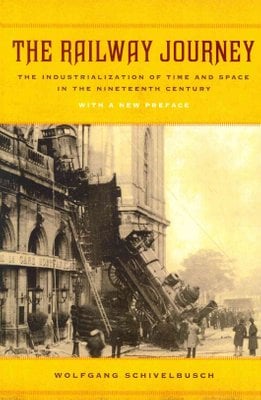
Because it made possible rapid movement and shipping across large distances, joining far-off towns to economic and cultural capitals, many people who lived in the early 19th century regarded the railroad as. 4.14 Rating details 437 ratings 37 reviews. General and Thematic - Wolfgang Schivelbusch, The Railway Journey: Leamington Spa/Hamburg/New York: Berg publishers, 1986. He has been awarded the Heinrich Mann Prize of the Academy of Arts in Berlin (2003) and the Lessing Prize of the City of Hamburg (2013). The Railway Journey: Trains And Travel In The 19th Century. Now updated with a new preface, The Railway Journey is an invaluable resource for readers interested in nineteenth-century culture and technology and the prehistory of modern media and digitalization.Ībout the Author Wolfgang Schivelbusch is a German historian and scholar of cultural studies. In The Railway Journey, Schivelbusch examines the origins of this industrialized consciousness by exploring the reaction in the nineteenth century to the first.
The railway journey schivelbusch full#
Belonging to a distinguished European tradition of critical sociology best exemplified by the work of Georg Simmel and Walter Benjamin, The Railway Journey is anchored in rich empirical data and full of striking insights about railway travel, the industrial revolution, and technological change. The Railway Journey : The Industrialization of Time and Space in the Nineteenth Century (1). As a history of the surprising ways in which technology and culture interact, this book covers a wide range of topics, including the changing perception of landscapes, the death of conversation while traveling, the problematic nature of the railway compartment, the space of glass architecture, the pathology of the railway journey, industrial fatigue and the history of shock, and the railroad and the city. In a highly original and engaging fashion, Schivelbusch discusses the ways in which our perceptions of distance, time, autonomy, speed, and risk were altered by railway travel.

He brings aboard such topics as the changing use of shock in the military, the evolution of medical and legal ties to injuries from train accidents, and the links to department stores in Paris.


In The Railway Journey, Schivelbusch examines the origins of this industrialized consciousness by exploring the reaction in the nineteenth century to the first dramatic avatar of technological change, the railroad. This history of rail travel in the Nineteenth Century provides a platform for author Schivelbusch to scan seemingly unrelated terrain to draw connections. But this was not always the case as Wolfgang Schivelbusch points out in this fascinating study, our adaptation to technological change-the development of our modern, industrialized consciousness-was very much a learned behavior. About the Book Translation of: Geschichte der Eisenbahnreise.īook Synopsis The impact of constant technological change upon our perception of the world is so pervasive as to have become a commonplace of modern society.


 0 kommentar(er)
0 kommentar(er)
